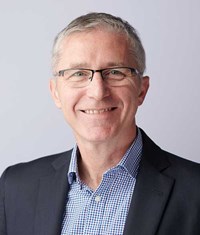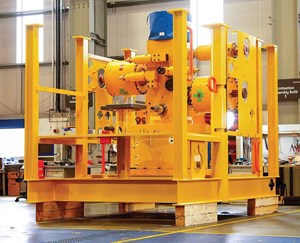Electrification of subsea systems drives life-of-field value
Adoption of electrically operated subsea production architecture not only improves return on investment, but it helps operators get closer to their net-zero carbon goals, as well. John Kerr (Fig. 1), vice president, engineering and technology, oilfield at Baker Hughes, said that electrification of the seabed requires a holistic approach.

“We are bringing together the oilfield equipment, oilfield services, turbomachinery, process solutions, and digital solutions in a horizontal way, so when I think about electrification, I think about how it connects. Full electrification of subsea trees, subsea pumping units, subsea injection units–illumination of your enterprise,” Kerr said. It is one very specific solution to the need for EOR, but it demonstrates the scale of opportunities that the technology presents.
Chemical injection is one of the last grand challenges remaining, because companies currently design for a highly conservative, “worst-case” scenario, with regards to asphalt and paraffin inhibition. “We overdesign, because nobody wants to start growing a 300-mile-long candle, so they blast in ten times more chemicals than anyone would ever need,” Kerr said. It’s possible, with an electrified subsea system, to dramatically reduce both the amount of chemicals used, and to reduce the size of the subsea systems that handle them.
In the North Sea, the trend is for major operators to sell their stakes in mature fields, and focus on centering their portfolios around a less-regionally-diverse set of assets. As this shift takes place, these legacy fields and associated infrastructure are moving into the hands of smaller, more nimble players, who are in a better position to benefit from a fit-for-purpose suite of subsea technologies.
“Working with these smaller operators gives us an opportunity to bring a much more comprehensive array of possibilities to bear,” Kerr said, pointing out that these companies have the motivation, in terms of finance and scale, to be open to “seabed as a service” approaches.
“In the past, the client would tell us what they wanted, we’d build it, install, and then go away for the next 30 years. Now, as opposed to the product being the end of the engagement, it is a means to an end, partnered with other elements consisting of early engagement. We are partnering with customers earlier, sometimes three or four years earlier, than we usually would. This lets us consider everything, from the topsides to the reservoir technologies, including a hard connection to the wellbore.”
As seabed infrastructure matures, subsea well intervention is set to become a critical part of keeping offshore operations moving. Typically, these operations carry a meaningful risk that re-entering the wellbore will hinder production, rather than help it. Smarter infrastructure designs can help reduce that risk and keep production flowing.

“Subsea intervention is becoming a very large segment for us,” Kerr said. “We’re moving strongly with it, towards a new, much more integrated way of working. If you’ll look at where we were a couple of years ago, you’d have to look across the company to find our components. But now what we’re doing is bringing it all together, organizing differently to be an aggregator of the subsea well access capability. Based on the outcomes we can make, in that life-of-well, life-of-ownership commitment, we can set up a relationship to deliver that reliability and predictability.”
As national oil companies and majors sell down their inventories of mature, but still productive, fields in the UK and Norwegian sectors of the North Sea, opportunities are presenting themselves for smaller operators to get involved in these legacy fields. Given the lower production rates and tighter economic profiles that older fields present, these customers are keen to leverage every advantage, to extend the profitability and productive life of these fields.

Scott Hamilton (Fig. 2), engineering director for subsea production systems, services and offshore at Baker Hughes, says that smaller operators are particularly well-suited to take advantage of these subsea advances. By offering a more compact footprint and a lower total cost, the company’s Aptara line (Fig. 3) of subsea systems can benefit the operator that’s willing and able to take advantage of new seabed electrification technologies. “The smaller operators are very open to any opportunity to streamline performance and reduce cycle time,” Hamilton said, observing that the adoption trend is reaching larger companies. “Majors are beginning to adopt new technologies as well.”
Key to the success of these advancements is digitalization. “Evolving the data platform, connecting the data tissue within the organization, from seismic data to reservoir drainage data, and having that directly connected through the seabed infrastructure is the goal,” said Kerr. “And this is where we add value for these smaller companies, bringing those elements to bear, to unlock the value and make the transferal of ownership viable for the long term.”
- Advancing offshore decarbonization through electrification of FPSOs (March 2024)
- Digital transformation/Late-life optimization: Harnessing data-driven strategies for late-life optimization (March 2024)
- The reserves replacement dilemma: Can intelligent digital technologies fill the supply gap? (March 2024)
- Subsea technology- Corrosion monitoring: From failure to success (February 2024)
- Digital tool kit enhances real-time decision-making to improve drilling efficiency and performance (February 2024)
- Digital transformation: Digital twins help to make the invisible, visible in Indonesia’s energy industry (January 2024)


